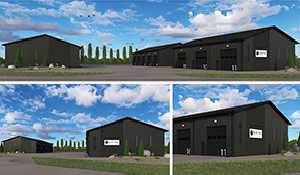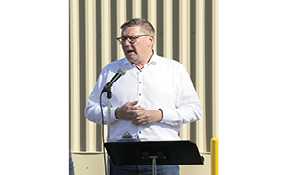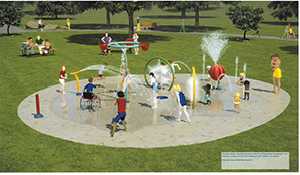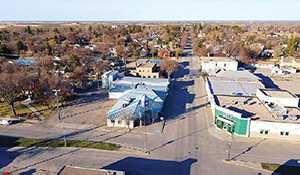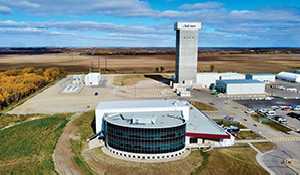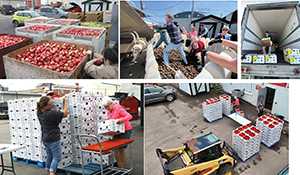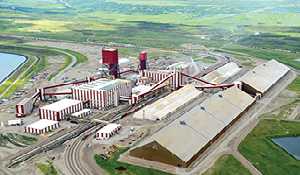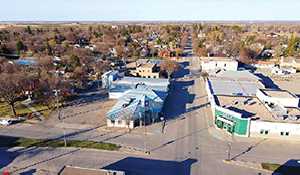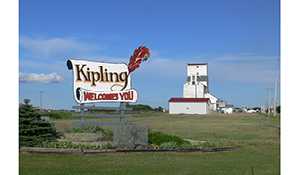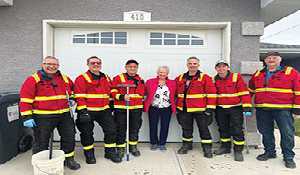Citizens on Patrol group forms in Moosomin
June 17, 2025, 10:11 am
Ryan Kiedrowski, Local Journalism Initiative Reporter

One group wants to send a message to would-be criminals: we’re watching.
The Citizens on Patrol Program is forming a local chapter in Moosomin to deter suspicious activities by having a presence in the community.
“We will be like an extra pair of eyes and ears for the police,” explained Napoleon Mactal, organizer of the local Citizens on Patrol group. “We just want a peaceful town and a peaceful place to live in, for ourselves and for our kids.”
The volunteers with Citizens on Patrol will conduct regular patrols to observe, document and report suspicious activities, working in groups of two for safety.
Mactal was inspired to act after noticing an increase in break-and-enter and theft occurrences locally. With Moosomin located on the Trans-Canada Highway, quick crimes of opportunity are tempting for those passing by.
“We’re not police, but at the same time, if you want to do something, I think the citizens on patrol is a good way to help out,” he said.
Recently, Doug Fehr, chair of the Battlefords Citizens on Patrol and Sgt. James Flynn, RCMP co-ordinator with Saskatchewan Crime Stoppers, came to Moosomin for a training session with those interested in forming a Moosomin Citizens on Patrol group.
“There were a few people that attended that seminar, and (Moosomin RCMP) Sgt. Trina Brace became our liaison,” Mactal said. “Right now, we have seven members and we are planning on getting more members.”
Moosomin RCMP are supportive of the Citizens on Patrol group.
“Moosomin Detachment looks forward to building this community partnership and fostering the sense of ownership of community members in taking a role in the safety of our community,” Brace said. “As we head into the summer months, there is typically an upward trend in property crime. With the new Citizens on Patrol group in Moosomin, there will be extra eyes in the community keeping watch, helping to keep our community safe.”
She says one of the biggest strengths the Citizens on Patrol has is in its people, locals who know the community well.
“The volunteers know the area, people and typical patterns of behaviour in the community, so they can help to identify out-of-place activities more effectively,” Brace said. “Our RCMP members live in our communities and the support of community members helps us all achieve the goal of safer communities.”
Town supports citizens on patrol
Mayor Murray Gray was excited to learn that Mactal wanted to establish a Citizens on Patrol in Moosomin.
“Any group that strives to make our community a better place to live, we would support.” He said. “This is going a little bit further than that because it’s also assisting a valuable part of our community in our RCMP. It’s a no-brainer for us to get behind, for sure.”
With a province-wide shortage of RCMP members, Gray believes the Moosomin Citizens on Patrol would be a valuable tool in fighting crime.
“There’s a definite shortage that they’re trying to address for sure,” he said. “That’s where this program could come in and assist the officers in the job that they have to do.”
This is not the first time a Citizens on Patrol group has been formed in Moosomin. Gray recalled a previous iteration years ago, but it wasn’t around for very long. He credited Mactal for his tenacity in setting up the local Citizens on Patrol program and reinvigorating people to volunteer.
“He’s worked hard on getting it together,” Gray said. “It takes a leader in order to organize something like that, and he’s certainly taken that role. I think it’s awesome that there’s volunteers that want to get organized, get out there and help assist our RCMP in monitoring any goings on in the community. I certainly support it in every way, shape, or form that I can.”
As for crime levels in Moosomin, Gray estimates it to be low.
“I think there’s a little bit of mischief, maybe that can be prevented with a little bit more visibility, as far as the Citizens on Patrol go,” he said. “I don’t think there’s a specific crime being committed that is the reason for this group to get together and start getting organized and working. Every community throughout the province has a little bit of crime in it. I don’t think we have a big crime problem by any stretch of the imagination, but there’s certainly some things that go on that hopefully we can prevent from happening going forward.”
Next steps
Aside from a few more interested members, Mactal noted there are some items the new Citizens on Patrol group could use as they officially begin patrolling.
“We need some equipment that’s for sure, some flashlights or binoculars, think things like that,” he said. “In the future, I could see a vehicle dedicated to patrolling, but that will take a long time!”
Volunteers are also quite eager to begin patrolling around Moosomin, even if it’s to get a feel for the work involved before the group officially launches.
“Mayor Gray suggested to start July 1, but one of our members is actually planning to do patrols before that,” Mactal said.
Those interested in volunteering can contact Mactal to begin a short process.
“We just need to schedule time for an interview, and then we just need them to go and get the criminal record check done, which will cost nothing,” Mactal said.
Concerned citizens can always report a crime or suspicious activities. In an emergency situation, people can call 911. To speak with a local RCMP member, the Moosomin Detachment is 306-435-3361. To report a crime anonymously, there’s also Crime Stoppers at 1-800-222-8477 (TIPS), or online at saskcrimestoppers.com




